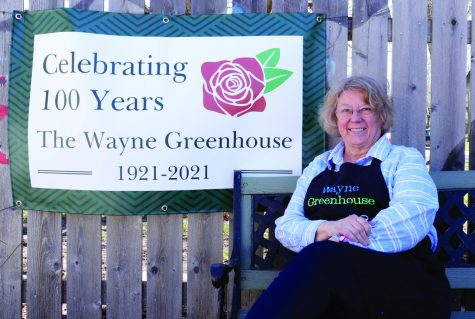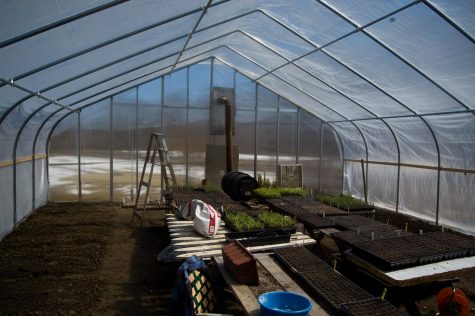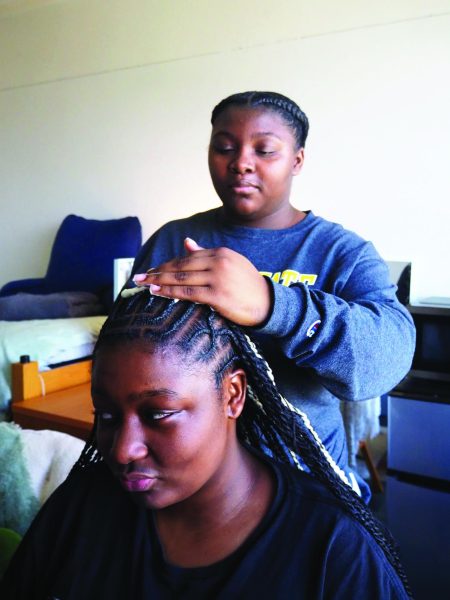Agriculture in a new light
February 3, 2021
Women have always played a large role in agriculture but in the last five years, the number of women in agriculture has grown exponentially. With gender inequality in every single area of work, women in agriculture have worked endlessly to be seen as equals to their male counterparts. If one word was to be used to summarize women in agriculture: more. There have been more women reported as producers of livestock and crops. Overall, more women have been a presence in agriculture.
Women’s roles in the agriculture industry are endless: they are farmers, ranchers, business owners, economists, and conversationists, among other careers.
According to the Census of Agriculture by the United States Department of Agriculture (USDA) and National Agricultural Statistics Service (NASS), in 2017, there was 1,227,461 female producers to the 2,172,373 male producers. Farms with at least one female producer (up to four per farm) made up about 56.5% of all producers in the United States in 2017. A female producer, defined by the USDA and NASS, is “a person who is involved in making decisions for the farm operation” and are working to become more visible in the farming community.”
As a woman in agriculture, myself, I know the challenges females face in the industry. We are seen as weaker, more vulnerable to mistakes and incompetent. Women are having to continuously prove themselves worthy to be in agriculture. Whether a woman is in charge of a farm, ranch, ag business, or any front-line position, she faces gender-specific obstacles. According to National Geographic and the United Nation’s Food and Agriculture Organization (FAO), “women-run farms produce 20 to 30 percent less than farms run by men” and this is due to our gender-specific obstacles. These obstacles include, but are not limited to, the “inherent gender bias in the economic system,” limited resources and education in second- and third-world countries, and access to land and supplies.
Men are inherently stubborn so women breaking out into agricultural communities are often “shot down” by the men that dominate the field. I have witnessed this first-hand in some of the small communities in Nebraska. Men are less willing to talk to women about when to get into the field and plant, when the best time is to sell heifers and/or calves at market, or when to put on fertilizers and chemicals. Granted most of these men are owners and operators of multiple-generations farms and are used to the “traditional” way of getting things done but it’s 2021, and I say get over it. Move over because female is the future!
The American Farm Bureau Federation revealed its “Women in Ag,” an online survey, as part of its Women’s in Leadership Program after the last census in 2017. The online survey aimed “to gauge the goals, aspirations, achievements and needs of women in American agriculture in a variety of areas.” The Farm Bureau uses its platform and outreach community to collect data, insight of women’s leadership positions and business successes. Through this research, hopefully, Americans will start to understand the ever-changing field of agriculture, changes in women’s role and changes women are making.
The Farm Bureau conducted a second Women in Ag survey in March 2019. The results of the women surveyed showed “75% of women are leaders at the local level” and “91% agree or strongly agree that there should be more women in leadership roles in the agriculture industry.”
As an active agriculture advocate myself, it is amazing to see that of the women surveyed in the Farm Bureau’s Women in Ag, 95% are also active advocates while 60% are members and are involved in at least one agriculture organization.
Women are not the only ones breaking into the agriculture industry, even though they make up 36% of all producers. Young producers are becoming a force to be reckoned with. In 2017, young producers accounted for 321,261 individuals in the United States and 9,141 in the state of Nebraska. The USDA and NSAA defines young producer as “a producer 35 years of age or younger”.
Young producers are in control of 240,121 farms in the U.S. and this accounts for 114,588,706 acres. Of the 321,261 young producers, women make up 36.15% in the U.S. Just over one third of the young producers reported in the Census of Agriculture have been present on their farm for five to nine years. According to the census, 96% of farms and ranches in the U.S. are family owned.
An outstanding 6,932 farms in Nebraska are owned and operated by young producers. The younger generation has its own obstacles to face and, if we know anything about the younger generation, they will put their minds to something and succeed. With the advancement in technology, the younger generation of producers are ahead of most.
As I stated earlier, the agriculture industry is changing, and for the better. Producers are utilizing new, high-tech machinery to minimize the time in the fields, precision planting, auto-steer and GPS planting. Producers are also operating drones to check on crops and pastures, opting for ariel spraying to cover crops with fertilizers and chemicals at the peak of the season and utilizing new technology to track precipitation so they minimize water waste













